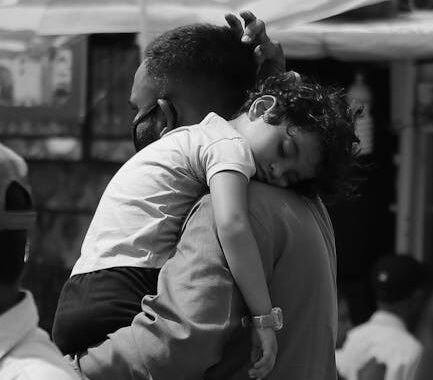Princess Charlotte’s Parents: A Look at Their PDA and Public Reaction
The public displays of affection (PDA) of Prince William and Catherine, Princess of Wales, have always been a subject of considerable interest, particularly in relation to their children, including Princess Charlotte. While the couple maintain a level of formality befitting their royal roles, their interactions, especially those involving their children, have sparked much discussion and analysis. This article delves into the nuances of their PDA, the public’s reaction to it, and the broader context of royal parenting in the modern era. The observation of how William and Catherine navigate public appearances with their family offers insights into their parenting style and their approach to their roles within the royal family.
The Evolution of Royal PDA
Royal displays of affection have evolved significantly over the years. Earlier generations of royals tended towards a more reserved public demeanor. However, with the changing times and increased media scrutiny, modern royals often strike a balance between maintaining decorum and showcasing genuine affection. Prince William and Catherine’s approach to PDA seems to reflect this evolution. While not overtly demonstrative, their interactions frequently reveal a warmth and intimacy that resonates with the public. Their interactions with Princess Charlotte, in particular, often highlight a tender bond between parent and child.
Princess Charlotte’s Parents’ Public Displays of Affection
Instances of Prince William and Catherine’s PDA, particularly when Princess Charlotte is present, are often subtle but meaningful. A gentle touch on the shoulder, a shared glance filled with warmth, or a reassuring hand on Princess Charlotte’s back during a public event—these small gestures communicate a bond of love and support. The Princess Charlotte parents’ affection is visible, yet always maintaining the appropriate level of formality expected from members of the royal family. The family often engage in playful interactions caught on camera, which generate significant positive public reaction. These moments often capture the family’s dynamic and showcase their close familial bond.
Analyzing Specific Public Appearances
- At the annual Trooping the Colour parade, the family is often seen interacting affectionately, with subtle gestures of affection between William and Catherine and their interactions with Princess Charlotte. These moments are typically caught by photographers and broadcast globally. This specific instance illustrates the careful balance struck between formality and familial affection.
- During sporting events or other public outings, the family’s interactions are often less formal, allowing for more natural expressions of affection and playfulness. This contrasts with more formal state events, showcasing the adaptability of their PDA based on the context.
- Royal Christmas card photos frequently depict heartwarming scenes of the family together, reinforcing the image of a close-knit and loving unit. Such photographs contribute to the public perception of the family’s close bond.
Public Reaction to Prince William and Catherine’s PDA
The public reaction to Prince William and Catherine’s PDA, particularly their interactions with Princess Charlotte, is generally positive. Many view their affection as a refreshing contrast to the more restrained displays of affection seen in previous generations of royals. The subtle yet heartfelt interactions foster a sense of relatability and humanity, making the royal family appear more approachable and relatable to ordinary citizens. [See also: Related Article Titles: Royal Family’s Public Image].
Positive Interpretations
The public often interprets the subtle displays of affection as a sign of a strong and loving family. It counters the perception of royals as distant and aloof figures, creating a more positive and empathetic image of the royal family. The Princess Charlotte parents’ PDA is widely seen as a demonstration of a healthy family life, which resonates with many.
Potential Criticisms
While generally positive, some critics might argue that the royal family’s PDA needs to align more closely with traditional expectations of royal decorum. However, these criticisms are often outnumbered by positive reactions and remain a minority viewpoint. The evolving nature of royalty and the increased focus on relatability outweigh the concerns of those who prefer a more formal approach.
The Importance of Context
It’s crucial to understand the context in which Prince William and Catherine’s PDA occurs. The setting, the event, and the presence of their children all play a role in shaping how their interactions are perceived. In formal settings, their displays of affection are typically more subdued, while in more relaxed environments, they may show more natural displays of affection. Analyzing these nuances is key to understanding their approach to public appearances. This nuanced perspective highlights the sensitivity of the couple when it comes to appearances involving Princess Charlotte and their other children.
Comparing to Other Royal Families
Comparing Prince William and Catherine’s approach to PDA with other royal families reveals a variety of approaches. Some royal families opt for a more traditional, reserved approach while others have adopted a more modern and approachable style. This comparison helps contextualize their choices and shows the range of approaches within the broader scope of modern royalty. [See also: Related Article Titles: Comparative Analysis of Royal Family Public Behavior].
Conclusion: Navigating Modern Royalty
Prince William and Catherine’s approach to PDA, particularly their interactions with Princess Charlotte, reflects a conscious effort to balance tradition with modernity. Their subtle yet genuine displays of affection resonate positively with the public, creating a more accessible and relatable image of the royal family. Their careful consideration and subtle actions showcase their conscious efforts in managing the balance between royal duties and personal affection. The evolving nature of royalty and the role of modern media demand adaptation and flexibility, which Prince William and Catherine seem to successfully navigate.
The Future of Royal PDA
As Princess Charlotte grows older, it will be interesting to observe how Prince William and Catherine adapt their displays of affection to suit her evolving needs and preferences. This ongoing evolution will continue to shape public perception of the royal family and demonstrate their adaptability in the face of evolving societal norms. The future observations of the Princess Charlotte parents’ PDA will continue to be a topic of interest and analysis.
The Princess Charlotte parents’ relationship demonstrates a delicate balance between upholding royal traditions and embracing modern displays of familial affection.


